Near Eastern Women's Clothing
From North Africa and the Levant
Primarily from the 16th century
| The artists who made these pictures were all Europeans and thus there may be inaccuracies in the representations of the garments. They are, nonetheless, the best we have to go on for this time period in North Africa and al-Andalus. |
| Maghribi Women's Clothing | |
|---|---|
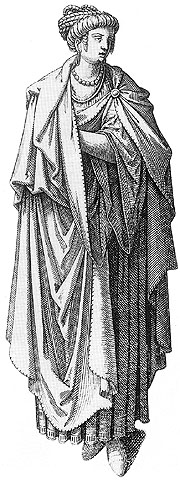 North African Woman, 16th century She wears a tunic under a ha'ik. Her head is bare, so these are possibly indoor garments |
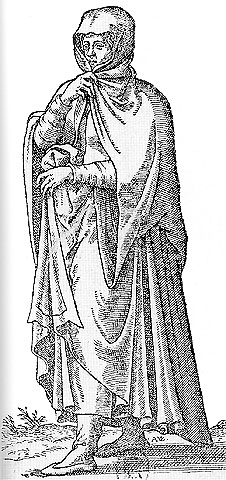 Woman of Algers from the Voyages of Nicolas deNicolay, 16th century She wears outdoor garments: a veil over her head coming down to her ankles, a narrow-sleeved tunic, stockings or hose of some sort, and "ballet" slippers |
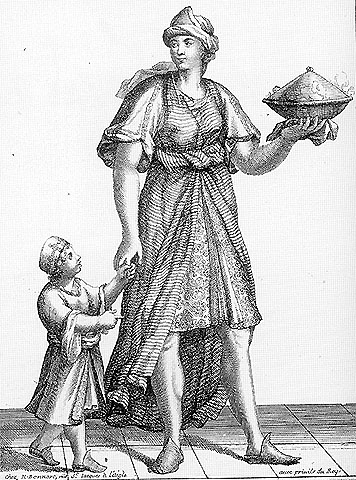 Algerian Woman and child, 17th century She wears indoor clothing, including fouta (wrapped as a skirt) or ha'ik over a short tunic, backless slippers similar to those worn today, and head wrap. |
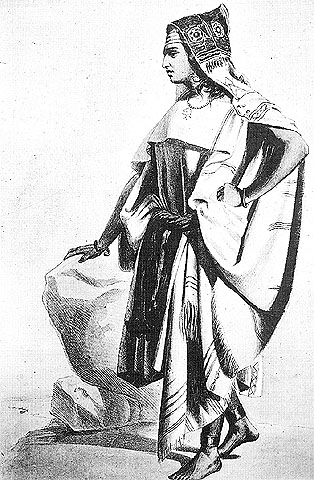 Woman of Kabyle, 19th century She wears a ha'ik (it's unclear if there's a tunic underneath) tied with sash or fouta and a bnika over her head. |
| Andalusian Women's Clothing | |
|---|---|
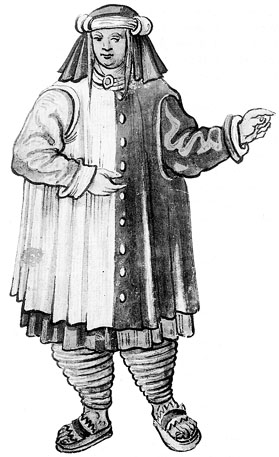 Spanish Moorish Woman from Christoph Weiditz, Trachtenbuch, 1529 She wears at-home clothing consisting of trousers of some sort with lower leg coverings, a parti-colored sleeveless surcoat over a tunic, veil/scarf on head anchored with a roll, and sandals. The sleeveless surcoat indicate Spanish Christian influence on costume. |
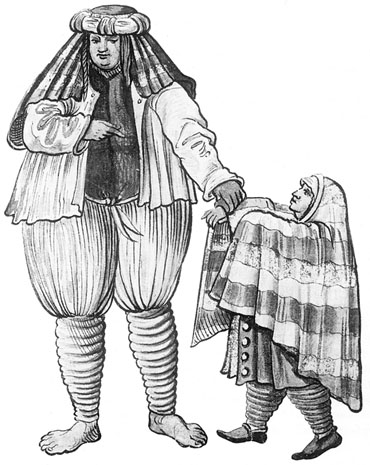 Spanish Moorish Woman and Child from Christoph Weiditz, Trachtenbuch, 1529 The woman wears at-home clothing consisting of trousers of some sort with lower leg coverings, jacket-like surcoat, tunic or vest, veil/scarf on head anchored with a roll. The jacket indicates Spanish Christian influence on garments. |
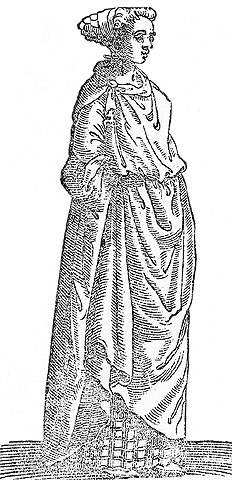 Moorish Maiden attributed to Cesare Vecellio, 1590 She wears what may be outdoor clothing: long tunic, ha'ik, and possibly a checked fouta, with a metal head cone over hair. Only the pointed toes of her footwear are visible |
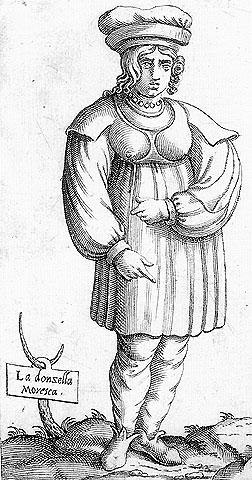 Moorish Maiden from D. Ghisi, 16th century She wears indoor clothing: knee length tunic under what is possibly a frimla, hose or narrow pants, pointed toed ankle boots, and one or two caps. |
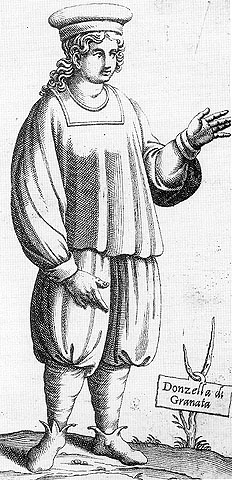 Maiden from Granada from D. Ghisi, 16th century She wears indoor clothing: one or two layered short loose tunics, pants, lower leg coverings, soft cap, and pointed toed ankle boots. |
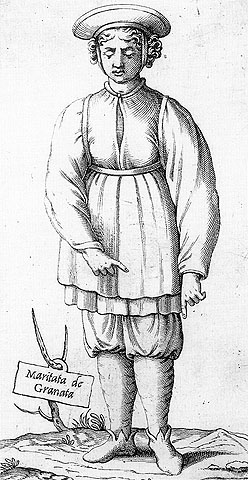 Married Woman from Granada from D. Ghisi, 16th century She is attired similarly to the Maiden, but with a frimla over her outer tunic and a hat. |
 The Conversion of the Moors from the Cathedral at Granada, 1530 This relief carving illustrates women's outdoor clothing: a long veil extending from head to ankles held by hand over a long tunic. Additionally, the women are wearing ankle boots and hats like those in the illustrations by D. Ghisi. | |
| Women's Clothing from Other Parts of al-Islam | |
|---|---|
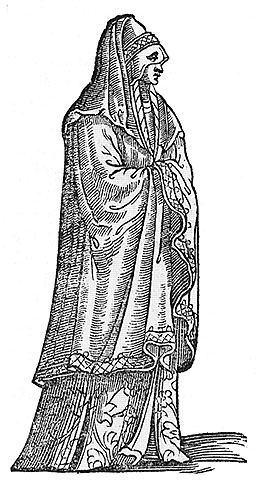 Syrian Married Woman attributed to Cesare Vecellio, 1590 She wears outdoor clothing: a long veil covering her head almost to ankles, over an ankle length tunic or coat. Her shoes are not visible. |
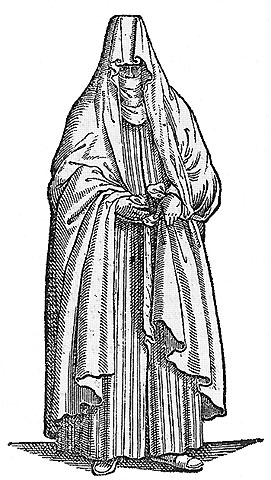 Woman from Cairo attributed to Cesare Vecellio, 1590 She wears outdoor clothing: a long veil covering her head almost to ankles, over an ankle length tunic or coat. Her veiling is more extreme than the Syrian woman's, and includes a lower face covering. On her feet she wears sandals |
|
Back To the Riyad Questions? Comments? Suggestions?
You can write to me here. |